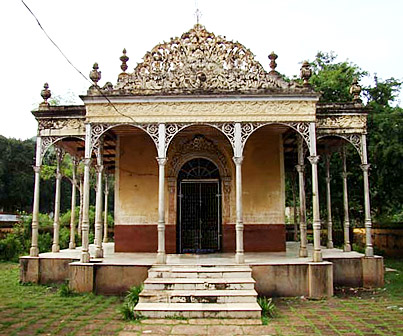 The tourism of Dhenkanal develops centering the holy places and temples reverberating the cultural heritage of the district. The district of Dhenkanal is dotted with innumerable temples and muths, date back to the ancient times of the pre historic ages. Dhenkanal is the meeting point of all the branches of Brahmanism including Saivism, Vaishnavism and Shaktaism, which encourage the tourism industry of Dhenkanal to flourish and achieve a thriving prosperity.
The tourism of Dhenkanal develops centering the holy places and temples reverberating the cultural heritage of the district. The district of Dhenkanal is dotted with innumerable temples and muths, date back to the ancient times of the pre historic ages. Dhenkanal is the meeting point of all the branches of Brahmanism including Saivism, Vaishnavism and Shaktaism, which encourage the tourism industry of Dhenkanal to flourish and achieve a thriving prosperity.
The Kapilah Temples belonging to the Saiva sect constitute to be the key interest in the tourism industry of Dhenkanal. It is a series of temples located in a single premise. The temple, which is 60 ft in height, can be approached by two ways- either by climbing 1352 steps or by the `Barabanki` or the travel twisting way. The chief interest of the Kapilah temple is the wooden idol of Jagamohana, Sri Ganesh, Kartikeya, and Ganga Devi. The legendary stories regarding the temple and the exquisite artistic fabrications around the temple walls fetch the tourist to its core. According to some scholars, the Kapilah Temples are older even the Chandrasekahr Jew temple and is also recognized as "Buddha Linga".
Another temple of Saiva sect, Naganatheswar Temple is famous in the tourism industry of Dhenkanal especially for its antiquity and the legendary stories regarding the temple. It is the most ancient Saiva temple and according to scholar Pandit Nagendranath Mohapatra Naganath satakam it is one of the 12 yotir Lingas.
Astasambhu Temple bears the specimen of the Sulki kings, who were once the feudatory of the region of Dhenkanal. The architectural tapestry around the temple walls embodies the pattern of Sulki art. A series of 8 temples and its structural pattern constitute it to be of significant interest in the tourism of Dhenkanal.
Sri Annakoteswar, one of the Saiva temple draws special attention in the tourism of Dhenkanal because of its amazing Sivalinga, which grooms in the bright fortnight and reduces on the dark half.
The tourism industry of Dhenkanal is profitably supported by the Vaishnav holy places. Since Vaishnavism was spread in different forms in different ages, the cult of Vaishnavism concentrated in the core of the district of Dhenkanal. A number of the holy places belonging to the different branches of Vaishnavism including the Ramanandi Vaisnavas, the Gaudiya Vaisnavas, and the Pancharattra all developed side by side in the district. The tourism industry of Dhenkanal has more to offer to the followers of the Vaishnav cult.
Siddaha Balaram Temples constitute to be a crucial figure in the domain of vaishnav cult in the district. The structural pattern of the temple along with the deity is the key feature of the tourist attraction here. In the sanetorium sanctum, Jagannath is seen with Balaram. But Subhadra being uniquely different from the others is kept separately and she represents the spiritual entity for the people of Dhenkanal
Sri Raghunath Temple of Saptya sajya is the famous Vaishnav temple is located about 900 ft of the hilltop. The legendary stories regarding the temple have given it a mythological status. Moreover the scenic beauty of the surroundings gathers tourists throughout the year. In the tourism industry of Dhenkanal it draws attention due to its antiquity and the fact that the worship of Lord Rama was initiated in this temple on 18th April 1956. Surrounding the Raghunath Temple a number of temples sprang up in the nearby adjacent areas. Those areas, not only are important as a tourist spot, but also at the same time serve as a small picnic sites because of the picturesque scenery in its vicinity.
Kunjakanta Temple at Dhenkanal is situated on a hilltop is renowned for the image of Radhakrishna, which was installed in the temple and ritualistic pattern of Brundavan was adopted.
At the foot of the Kapilas Mountain Jagannath Temple is located. It is one of the principal temple of the Vaishnav cult. During the festival of Rathajatra, a huge gathering occurs in the place, which is profitable for the tourism industry of Dhenkanal.
The Narayan Temple at the Kapilas hill is the significant name in the tourism industry of Dhenkanal, which amply demonstrates the amalgamation of Saivism & Vaishnavism. The beautiful black granite image of Shri Narayan and the stream flowing down touching the feet of Shri Narayan are also the important centers of attraction about the temple.



















